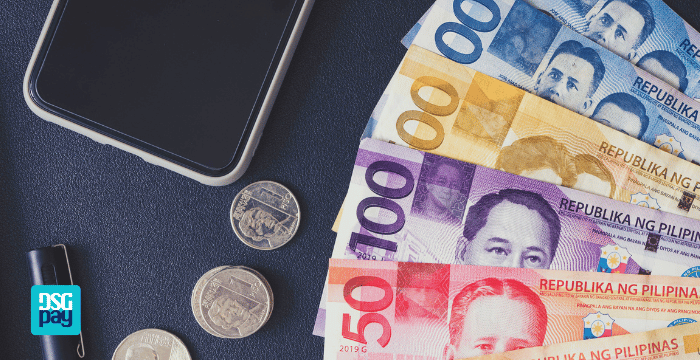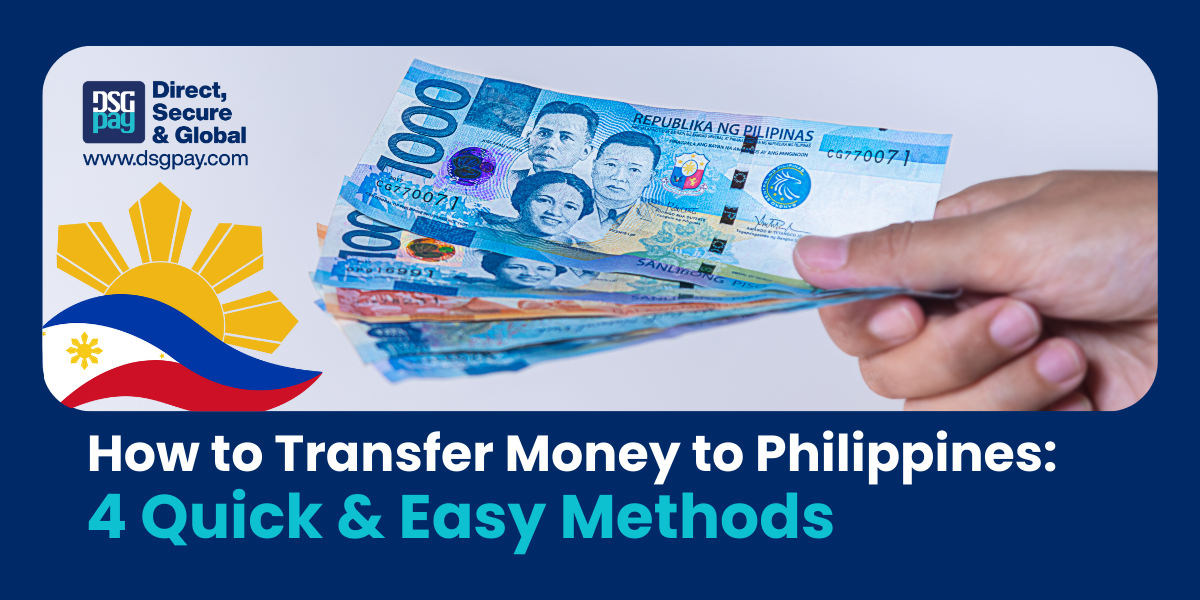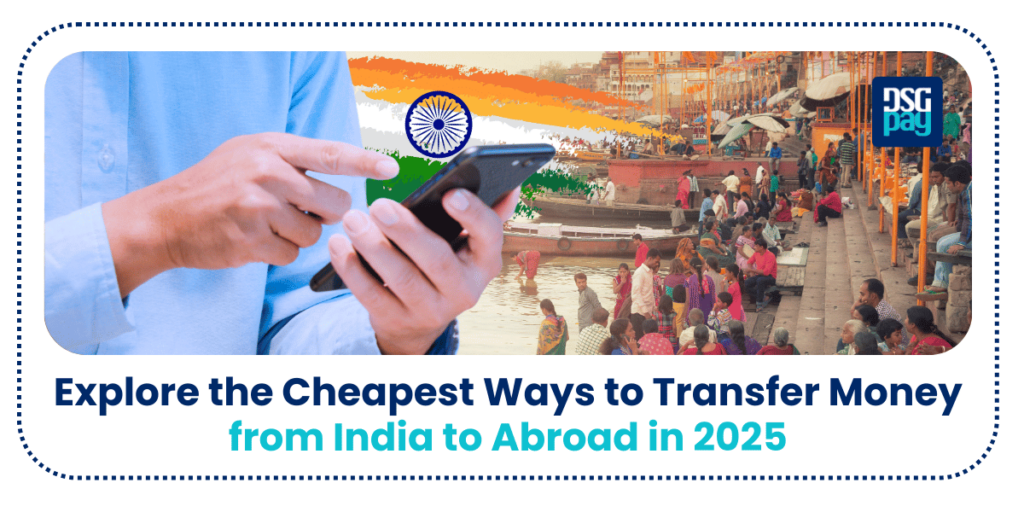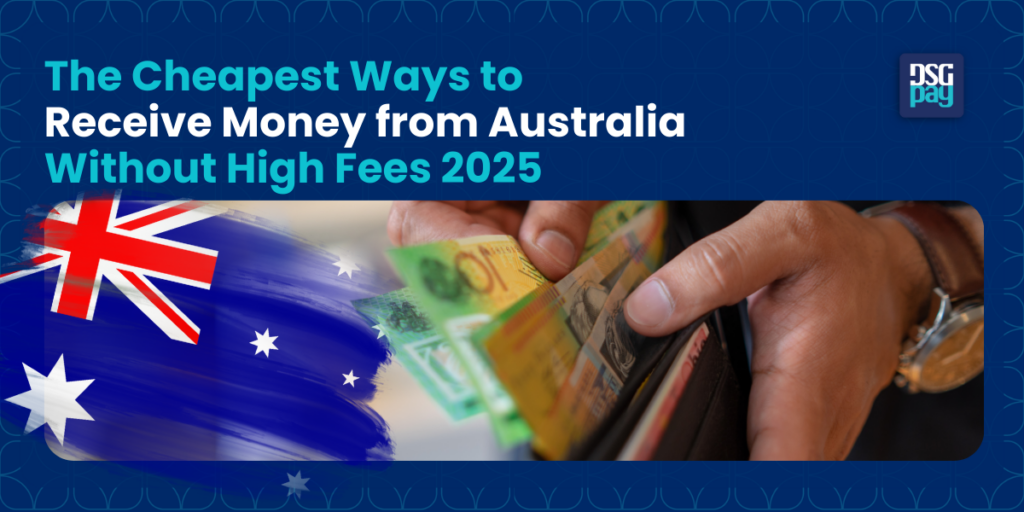Are you residing overseas and looking for how to transfer money to Philippines, but don’t know where to start? Do you need a convenient and quick way to send money home? Contrary to popular conceptions, sending money to the Philippines isn’t difficult, you only need the right tool.
In this guide, we’ll explore the four best ways to send money to the Philippines regardless of current location; whether USA, UK, India, Malaysia, Hong Kong, or Thailand. We’ll also explain how to transfer money to Philippines bank accounts using online payment solutions.
If you’re ready to know how to send money to the Philippines quickly and easily, let’s get right into it!
Table of Contents
4 Best Ways to Send Money To The Philippines
Transferring money to the Philippines can be made from anywhere in the world. There are several money transfer methods that offer minimal risks, low cost, and easy-to-use interface.
However, before we dive into the tools, it’s important to know these four popular ways to send money to the Philippines. These are;
- Traditional bank transfer
- Money transfer providers
- Mobile wallet transfer
- Cryptocurrency wallet transfer
1. Traditional Bank Transfers
This is the most classic way to send money to the Philippines. It is as easy as depositing money in the bank. With the advent of financial technologies, traditional banks now offer fast and reliable money transfer services to the Philippines and other places in the world.
If you want to send money to the Philippines using traditional bank transfers, you can either visit a local bank branch near you or use the bank’s online wire transfer services. We’d recommend visiting a local bank if you want to transfer a large sum -$10,000 or more.
For either method, follow this guide for optimal convenience and ease:
1.1 Deposit and Initiation
This is where the sender initiates a wire transfer by providing details such as:
- Recipient’s full name.
- Recipient’s address.
- Recipient’s bank name and country.
- Recipient’s account number and type (savings or checking)
- The recipient’s routing number or SWIFT code which is used to identify his/her bank.
- Amount to be transferred or deposited in the recipient’s account.
- Reason for transfer (optional)
1.2 Interbank Exchange
This is where the sender’s bank communicates with the recipient’s bank using the SWIFT network. The recipient bank’s SWIFT code ensures that the exchange is precise and secure.
In some cases, the sender’s bank may need to transfer the funds through an intermediary bank. This usually happens when the sender’s bank has no branch or affiliate banks within the country and area of the recipient. Where an intermediary bank is involved, they typically charge handling and currency conversion fees.
1.3 Currency Conversion
All monies sent to the Philippines must be converted to the Philippine peso for use within the country. To send money to the Philippines from the USA, the sender’s bank will first convert the USD (US Dollar) to PHP (Philippine peso). Banks typically convert monies at their foreign exchange rate which may vary slightly from the existing market rates. There is also a charge for converting currencies before sending to the recipient.
1.4 Completion
Once the transfer has been initiated and all associated fees have been deducted, the money will be deposited into the recipient’s account within one to five business days.

NOTE: Sending money to the Philippines attracts all or some of the following fixed or percentage rate fees:
- Outgoing Transfer Fees: This is deducted from the sender’s bank. In most cases, the fee depends on the transferred amount – the higher the amount, the higher the fee. It is typically $20 – $40.
- Receiving Fees: Usually, there are no receiving fees for standard transfers, but some banks may charge a small fee (up to $5).
- Exchange Rate Margin: Traditional banks tend to offer lower exchange rates, and this margin difference may result in an additional cost of 1% – 5%.
- Handling Fee: If you use an intermediary bank, there’s usually a fee for the processed transaction.
Pros
- It is reliable, suitable, and secure for large amounts.
Cons
- Attracts high transaction fees.
- Not a good choice for quick transfers.
2. Money Transfer Service Providers
Sending money to the Philippines can be conveniently done online. With the fast-rising FinTech applications and web platforms, you can conveniently send money to Philippines from the US, UK, Malaysia, India, Hong Kong, or Thailand. Plus, it’s quick and easy.
This service offers a more unique, affordable, and convenient way to transfer money to the Philippines, compared to the traditional bank method. Here, you can send money via the website or mobile app, and the recipient in the Philippines can receive it through direct bank deposits, cash pickup, home delivery (in some instances), and more.
The table below provides an overview of several popular online money transfer platforms, with details on their coverage, associated fees, speed, transaction limits, and payment methods when it comes to transferring money to the Philippines. This will help you choose the best option that suits your needs.
| Providers | Coverage | Associated Fees | Speed | Transaction Limits Per Transfer |
| Wise | 70+ Countries | $7.43 plus 0.57% of the converted amount. | Few seconds to 1–2 working days for large amounts | Wire: 490,000 PHP Wallet: 49,999 PHP |
| Western Union | 200+ Countries | Depends on the transferred amounts $0–$300.99 = $5 $301–$999.99 = $5+1.75% $1,000.01 and above =$15) | In minutes to 1 banking day | Varies by country ($19,000 for USA, £15,000 for UK, etc.) |
| Xe | 200+ countries | Varies on method and destination. | 1-4 working days | $535,000 or its currency equivalent |
| Remitly | 170+ Countries | $0 for transfers in pesos; $4.00 for cash pickup & mobile delivery; +1.5% of the USD transfer amount plus a $1.99 fee for $999 or less; +1.0% of the USD transfer amount plus a $1.99 fee for $1000 and more. | Express: minutes Economy: 3-5 days | 24 hours: $2,999 – $6,000 30 days: $10,000 – $20,000 180 days: $18,000 – $36,000 |
| WorldRemit | 130+ Countries | Depends on the receive method (e.g, $1 – $100 = $0.99 per transaction) | Most transfers are completed in minutes | Transfers: PHP 500,000 per PHP transfer or USD 5,000 per USD transfer; Mobile Money: PHP 50,000 per transfer; Cash pickup: Depends on the recipient’s provider (e.g, PHP 250,000 per PHP payout transfer & USD 1,500 per USD payout transfer at M. Lhuillier branches.) |
To learn how to transfer money to Philippines, skip the tedious process and try DSGPay. This is one of the best ways to process cross-border payments, particularly to Asian countries like the Philippines. It offers direct, secure, and multi-channel processing for international transactions.
Pros
- Instant transfer process time
- Accessible
- Convenient
- Easy to use
Cons
- High fees for large transactions
- Transfer limits
- Dependent on the internet
3. Mobile Wallet Transfer
This is one of the best ways to send money to the Philippines. It involves creating a digital bank account with a mobile money operator. Funds are then deposited into the account from traditional bank accounts.
You can use popular mobile wallet providers like GCash or PayMaya, which are commonly used in the Philippines. The transaction fees are usually low, ranging from 25 cents to $5.

These mobile wallets are typically linked to a bank account or physical card, which allows a seamless transaction process.
Pros
- It’s fast, easy, and convenient to use
- Many Filipinos are familiar with these wallets
Con
- Limited to users with the wallets
4. Cryptocurrency Wallet Transfers
If you’re still looking for how to transfer money to Philippines, you can try using the cryptocurrency method. This method creates a flexible and efficient means to transfer money to the Philippines regardless of your current location.
Through blockchain technology, you can transfer money to the Philippines using various crypto wallets such as; Trust Wallet, MetaMask, and more. Users can use this method to bypass intermediary banks, exorbitant transaction fees, and inaccessible service restrictions.
To get started, all you have to do is:
- Set Up Account: Create an account with any reputable cryptocurrency wallet provider.
- Pick a Coin: Choose a crypto coin that suits your needs. The most popular ones are; Bitcoin, Ethereum, USDT, and many more.
- Own a Coin: If you don’t have it already, then convert your money to a crypto coin by linking your traditional bank account to the wallet or initiating a purchase by transfer. We recommend you purchase a stablecoin such as USDT, to avoid market volatility.
- Initiate the Transfer: Transfer the preferred amount and include the recipient’s wallet address in the required space. Make sure the address is correct, and your receiver understands cryptocurrency transactions.
- Received Funds: The recipient will receive the transferred coins within minutes. If needed, the recipient can convert the coin back to fiat currency in the wallet or sell it to interested traders.
Pros
- Low fees
- Decentralized
- Quick Processing Time
Cons
- Market Volatility
- Requires a basic understanding of crypto transactions
Tips For Transferring Money To The Philippines
Knowing how to transfer money to Philippines also requires being cautious to avoid costly and difficult situations. You should know how to manage your finances irrespective of the method you choose to use.

Here are some tips to help you understand how to transfer money to Philippines perfectly:
- Choose a reliable service provider that suits your needs and budget. Look out for reviews – especially mid-range reviews that appear honest rather than promotional or outrightly negative.
- For cross-border remittance transactions, it’s best you choose a provider that specialises mainly in these kinds of transactions. For example, DSGPay performs swift and easy international transfers for countries like the Philippines and more.
- Compare the fees and exchange rates charged by different service providers. This will help you weigh the options and choose the most suitable option.
- Consider transfer speed when choosing a provider. Although transactions may get delayed due to internal issues, interbank communication challenges, festivity, etc, it’s best to choose a provider you can rely on for most days.
- Prioritize security when trying to send money to the Philippines. Two-factor authentication systems such as one-time passcodes, fingerprint scanning, password encryption, and security questions are non-negotiable. Always opt for service providers with strong security measures.
Final Thoughts on How To Transfer Money To Philippines
Whether you’re in the US, UK, or other parts of the world, transferring money to the Phillippines is quite easy. In this article, we’ve divulged the different ways to transfer money to the Philippines from traditional bank transfers to cryptocurrency wallet transfers.
These methods are equally competitive in terms of reliability, speed, convenience, and security. However, there are slight variations in service fees, processing time, and ease of use to influence your choice.
If you’re looking for other cheap ways to send money internationally, check out our other blog posts.
Why DSGPay Is The Best Way to Send Money to the Philippines From the USA, UK, Or Other Countries
When sending money to the Philippines, DSGPay stands out as your trusted partner for seamless, secure, and cost-effective transactions. With a wide range of payment options, competitive pricing, and easy integration, DSGPay simplifies the process and helps your business thrive in the fast-paced digital landscape.
DSGPay offers a convenient and simplified means to send money to the Philippines with features such as:
- Multi-Currency Virtual Accounts: Access over 30 currencies, including PHP, for seamless global transactions.
- Competitive Exchange Rates: Save on every transaction with low-cost currency conversions.
- Effortless API Integration: Quick and easy setup to streamline your business operations.
- Real-Time Payment Notifications: Stay updated on incoming and outgoing payments instantly.
- 7-Day Availability: DSGPay is operational every day, ensuring constant support.



